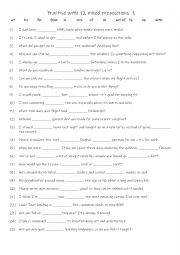
|
A1+-A2 Practise with 12 mixed prepositions 1
Students need to learn prepositions like at, by, for, from, in, into, of, on, out of, to, up, and with because these prepositions are essential for constructing clear and accurate sentences in English. Prepositions show relationships between words, such as location ("at the park"), direction ("into the room"), time ("by 5 p.m."), and cause ("for hi...
Level: elementary
Age: 8-100
Type:
Downloads: 130
|
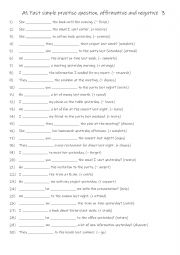
|
A1 Past simple practise question, affirmative and negative 3
Learning the past simple tense with questions, affirmative, and negative sentences is essential for students as it enables effective communication about past events. It provides a foundation for understanding grammar and constructing basic sentences, which is crucial for daily conversations. Mastering these forms ensures students can ask questions,...
Level: elementary
Age: 8-100
Type:
Downloads: 130
|
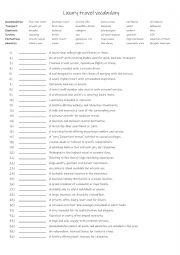
|
A2+-B1 Luxury travel vocabulary
Students familiarise themselves with the 30 words and their meanings, then they read the definitions to work out and write in the space provided which one is being described. Answers on page 2.
Level: intermediate
Age: 9-100
Type:
Downloads: 130
|
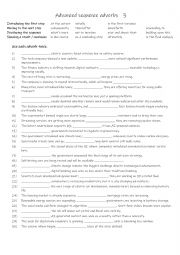
|
7 Advanced sequence adverbs 3
First, students need to familiarise themselves with the 7 adverbs. Then they read the sentences to work out which one is needed to complete the gap-fill. Each adverb is used 3 times! Answers on page 2
Level: advanced
Age: 12-100
Type:
Downloads: 130
|
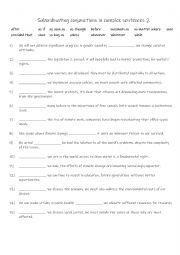
|
B1+-B2 Subordinating conjunctions in complex sentences Part 2
Using subordinating conjunctions allows students to express more detailed and nuanced thoughts. For instance, "although" and "even if" help convey contrast or condition in sophisticated ways. They add variety to writing and speaking, moving beyond simple sentences and making communication more engaging and dynamic. For example, "whenever" or "whoev...
Level: intermediate
Age: 10-100
Type:
Downloads: 129
|
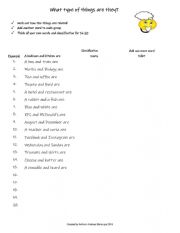
|
Word association
This worksheet is suitable for A2 level young learners.A great way for students to group vocabulary and see the association. It can be used in pairwork, small groups or individually.
Level: elementary
Age: 8-100
Type:
Downloads: 129
|
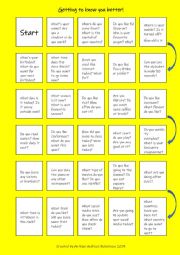
|
Getting to know you better
A fun board game with today�s topics of interest. Most have 2 or 3 questions relating to each topic to develop speaking skills.
Level: elementary
Age: 9-100
Type: worksheet
Downloads: 129
|
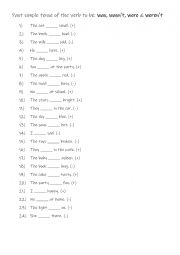
|
A1 Past simple tense of the verb to be: was, wasn�t, were & weren�t
Students read the sentences and complete it using the correct form of the verb to be. Answers on page 2
Level: elementary
Age: 8-100
Type:
Downloads: 129
|
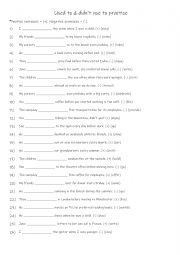
|
A2+-B1+ Used to & didn�t used to
Students complete the sentences using the given verbs. Positive sentences = (+). Negative sentences = (-). There are 13 positive and 13 negative sentences. Answers on page 2.
Level: elementary
Age: 8-100
Type:
Downloads: 129
|
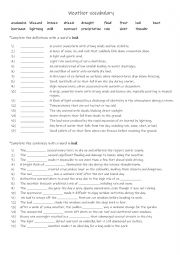
|
B1-B2 Weather vocabulary
Students read the 17 weather related words and in the first part match the words to their definitions. In the second part they read the sentences and use the correct word to complete the gap-fill sentence. Answers on page 2.
Level: intermediate
Age: 8-100
Type:
Downloads: 129
|












